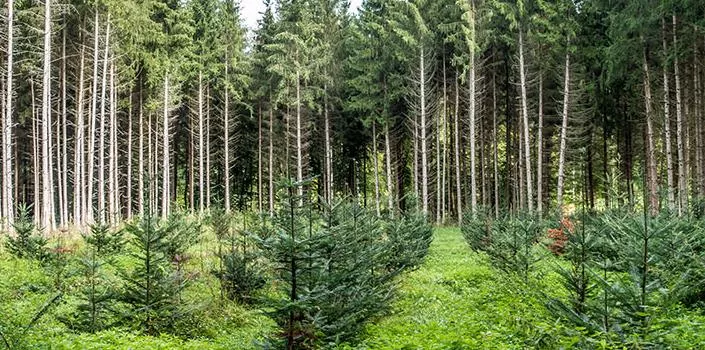The current effort, for the first time, also includes the soil protection and water-provisioning aspects of forests, as well as wood production, thereby allowing better decision-making when it comes to regreening deforested lands."
Sampurno Bruijnzeel
17 March 2022
Forest restoration must navigate trade-offs between environmental and wood production goals
New research, co-authored by visiting professor Sampurno Bruijnzeel, shows forest restoration schemes should prioritise restoring native forests for greatest climate and environmental benefits. However these benefits have a trade-off with wood production in comparison with tree plantations.

Diverse native forests store more above-ground carbon, provide more water to nearby streams, and better support biodiversity and prevent soil erosion than simple tree plantations, a new study published in Science has found – but plantations have an advantage in wood production.
The study, led by Dr. Fangyuan Hua of Peking University, explored the benefits of restoring native forests versus establishing a range of simple tree plantations in terms of biodiversity conservation and four key functions of value to humans - or ‘ecosystem services’ - provided by a forest: carbon storage, soil erosion control, water provisioning, and wood production.
The research used an unprecedentedly large database consisting of almost 26,000 records from 264 studies conducted in 53 countries.
Sampurno Bruijnzeel, a Visiting Professor at King’s College London’s Department of Geography who oversaw the compiling of the water-related data for the paper, explained: "Previous assessments of the ecosystem services of native and planted forests have focussed mostly on biodiversity and carbon sequestration potential."
Forest restoration is gathering pace worldwide, in part as a way to tackle climate change. It is also conducted for the water provisioning and flood regulation functions of forests, and to prevent soil erosion and produce wood products.
Forest restoration schemes aimed at providing ecosystem services tend to involve tree plantations of just one or a small number of tree species, rather than the restoration of diverse native forests. This is based on an implicit assumption that tree plantations are just as effective in delivering these services, but the paper's authors say there is no robust scientific evidence for this.
The paper also explains that aboveground carbon storage, soil erosion control, and water provisioning are delivered better by native forests than by tree plantations. Soil erosion control in particular has the most to lose from plantation-style forest restoration, and the shortfall of plantations in water provisioning is more serious in drier climates – precisely where water is scarcer.
However, for wood production, the limited evidence available showed that tree plantations can outperform native forests, highlighting a critical trade-off.
The faster growth of trees in plantations managed for timber or pulp production implies greater uptake of water from the soil, which leaves less water for replenishing the groundwater reserves that sustain streams, especially in drier areas. To make matters worse, trees in such plantations are typically harvested more frequently than those in native forests, leading to greater soil disturbance and poorer streamflow regulation."
Sampurno Bruijnzeel
Tree plantations worldwide typically use fast-growing species like pines, firs, and Eucalyptus. These trees tend to grow tall and straight, and in actively managed plantations their growth is often enhanced by fertilisers and weeding to prevent other plants competing for nutrition and light.
In contrast, native forests contain a mix of different tree, shrub, and herbaceous species, and they tend not to be managed for growth. This provides a more suitable habitat with diverse food and other resources for a range of plants and animals to thrive, but also means that wood production may be less efficient.
It also means that plantations might indirectly provide environmental benefits, by allowing other, higher-biodiversity forests to be ‘spared’ from being cut down for wood production.
The study also found that the environmental performance of many old or abandoned plantations across the world that are no longer used for wood production falls short of native forests. Given that these plantations seem to be common, there are probably significant environmental benefits to be gained by restoring them to native forests.
The study involved an international, cross-disciplinary team of researchers from seven countries. The research was funded by the Newton Fund of the Royal Society (UK) and the São Paulo Research Foundation (Brazil).
